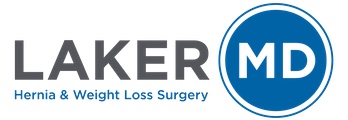What is Achalasia?
Achalasia is an uncommon disorder of the esophagus where the esophagus loses its ability to effectively push food/liquids into the stomach. Over time the pressure generated by the esophagus is greatly reduced and potentially non-existent. In addition, the lower esophageal sphincter (lower esophageal valve) fails to relax preventing food/liquid from passing into the stomach. Achalasia is a progressive disease, over time the symptoms tend to worsen and often the diagnosis is not made until late in the course of the disease.
The cause of achalasia remains elusive. There are a number of infectious organisms that have been shown to cause achalasia but this is a relatively rare cause of achalasia in the United States. Autoimmune disorders, such as schleroderma, can lead to the development of achalasia. The common pathologic finding is destruction of ganglion cells of the myenteric plexus (nerves) between the muscular layers of the esophagus and replacement by scar tissue. Most commonly an identifiable cause cannot be determined and this is referred to as primary or idiopathic achalasia.
What are the symptoms of achalasia?
Individuals with achalasia usually go undiagnosed for many years as initial symptoms tend to be mild. Early symptoms may relate to the sensation of denser meals “getting stuck” or “slowly going down”. Over time this tends to get worse and patients begin to exhibit symptoms similar to reflux or heartburn. In time, many patients will begin to regurgitate undigested food shortly after eating or even hours after eating. Eventually, the symptoms progress to the point that even liquids can be difficult to swallow.
Weight loss and food fear often develop as the process worsens. If left untreated the esophagus can become quite dilated and may require removal. There is also an increased risk of developing esophageal cancer.
How is achalasia diagnosed?
Esophageal Manometry
This test provides quantifiable information regarding the pressure generated by the esophagus during the propulsion of swallowed water. A tube is passed through the nose and into the esophagus. Side holes throughout the tube are used to locate the high pressure zone (lower esophageal sphincter), the length of the lower esophageal sphincter mechanism as well as determining the pressure generated by different areas of the esophagus.
Manometry is the gold standard to make the diagnosis of achalasia. The diagnosis is confirmed by manometry when esophageal motility has been demonstrated to be abnormal or absent and that the lower esophageal sphincter fails to relax with swallowing.
Esophogram
This is a radiology study where the patient swallows a chalky substance that allows the inside of the esophagus to be visualized and can provide anatomical information as well as information on esophageal motility. Motility is the coordinated movements that are made by the esophagus to push what we swallow down into the stomach. This study often demonstrates a markedly dilated esophagus that tapers down into what is referred to as a “bird’s beak”.
Endoscopy
During this procedure an endoscope (long, thin tube with a camera on the end) is passed from the mouth into the esophagus and stomach. This procedure allows for direct visualization of the esophagus and can be used to determine the degree of injury to the lining of the esophagus as well as ruling out cancer as a cause of the patient’s symptoms.
Additional testing may include 24 hour pH testing, CT imaging and other modalities as needed.
What are medical options for treatment?
Non-surgical options vary from endoscopic balloon dilatation to injection of Botox into the muscle fibers of the esophagus. Unfortunately, the improvement of symptoms tends to be short-lived, often requiring repeated procedures. Eventually, these treatment modalities tend to be less effective over time and lead to the need for surgical management. In addition, multiple dilations or injections using Botox can create inflammation and scarring which can make surgical management more difficult.
What is the surgical treatment for achalasia?
The surgical treatment of achalasia has been historically referred to as a Heller myotomy or esophagogastric myotomy. The procedure can be accomplished using laparoscopic technique in a safe and reproducible fashion. The basis behind the procedure is to spread apart the muscle fibers of the lower esophagus and lower esophageal sphincter mechanism. By doing so, the esophagus passively allows food/liquids to pass into the stomach. In other words, the procedure relaxes the esophagus and relieves the functional obstruction. In order to prevent reflux after surgery various degrees of a gastric wrap are performed.
The surgical management of achalasia addresses the symptoms and does not cure the patient from the underlying cause. Occasionally, patients require additional surgery years later to alleviate recurrent symptoms.
What is the recovery?
Most patients will be discharged within one to three days after the surgery. After discharge patients recover in a fashion similar to those treated for typical reflux surgery.
What are the dietary changes after surgery?
You will receive explicit instructions both before and after surgery about diet. You will progress from liquids to thickened liquids to soft foods and eventually back to a regular ‘heart healthy” diet. Details of the post operative diet will be provided prior to discharge from the hospital.
